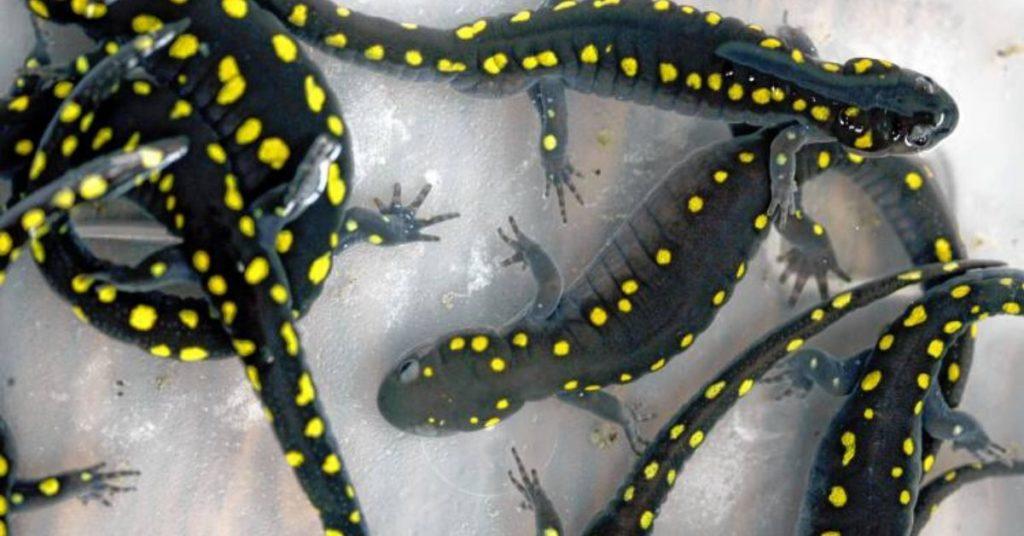
You’ve probably seen this in the form of a meme or a furious political status update from a friend: Supposedly, a group of baboons is called a “congress.” However, as amusing as it may sound, it’s actually not true. In a 2012 article, fact-checking site PolitiFact investigated this thoroughly, consulting dictionaries and anthropologists in the process. As it turns out, the correct collective term for these primates is “troop” (or sometimes “rumpus”). Meanwhile, “congress” is the appropriate name for a group of slippery, typically toxic, and opportunistic predators—salamanders.
Salamanders are amphibians, which came from the Greek amphibia (meaning “living a double life”). These fascinating creatures usually have long, slender bodies and lengthy tails; some species have two legs, while others have four. One thing that all salamanders share in common, though, is the need to keep their skin moist, which is why it’s important for them to have a water source nearby. Amazingly, salamanders such as the axolotl are capable of regrowing entire limbs and tails.
These lizard-like animals tend to be more active during cooler times of the day or at night. Certain types of salamander live in caves; having evolved to thrive in darkness, the absence of light does not seem to bother them.
Salamanders are opportunistic carnivores, consuming almost anything that can fit in their gaping maws. They typically prey upon slugs, snails, and other slower-moving or less powerful creatures. However, bigger species are known to eat fish, rodents, frogs, and even other salamanders.
As far as self-defense goes, it’s said that most (if not all) salamanders produce skin secretions that are poisonous or disgusting to potential predators. Some species even have tetrodotoxin on their skin, the same type of deadly neurotoxin produced by the greater blue-ringed octopus. Others are said to rely on bright skin coloration and patterns (aposematism) for protection, a bluff that makes them look more dangerous than they actually are.
Hopefully, that should clear it up: A congress is composed of amphibians, not primates. And in case you come in close contact with any of these slimy congress members, make sure to wash your hands.
Still remember your 5th-grade science classes? Test your knowledge and see if you still remember these facts and fundamental concepts in human anatomy, biology, botany, and other branches of science. Click here to try the “Are You Smarter Than A Pinoy Fifth-Grader” Challenge.
Follow the hashtag #FlipFacts on Facebook and Instagram to get your daily dose of science trivia!
References
- https://www.concordmonitor.com/A-Different-Kind-of-Congress-9001803
- https://www.dhnature.org/uploads/2/5/7/0/25708496/salamander_eco_meet_study_guide.pdf
- https://www.livescience.com/52627-salamanders.html
- https://www.politifact.com/factchecks/2012/jan/02/chain-email/chain-e-mail-claims-when-baboons-congregate-its-ca/
- https://www.savethesalamanders.com/poisonous-amphibians/
Author: Mikael Angelo Francisco
Bitten by the science writing bug, Mikael has years of writing and editorial experience under his belt. As the editor-in-chief of FlipScience, Mikael has sworn to help make science more fun and interesting for geeky readers and casual audiences alike.









